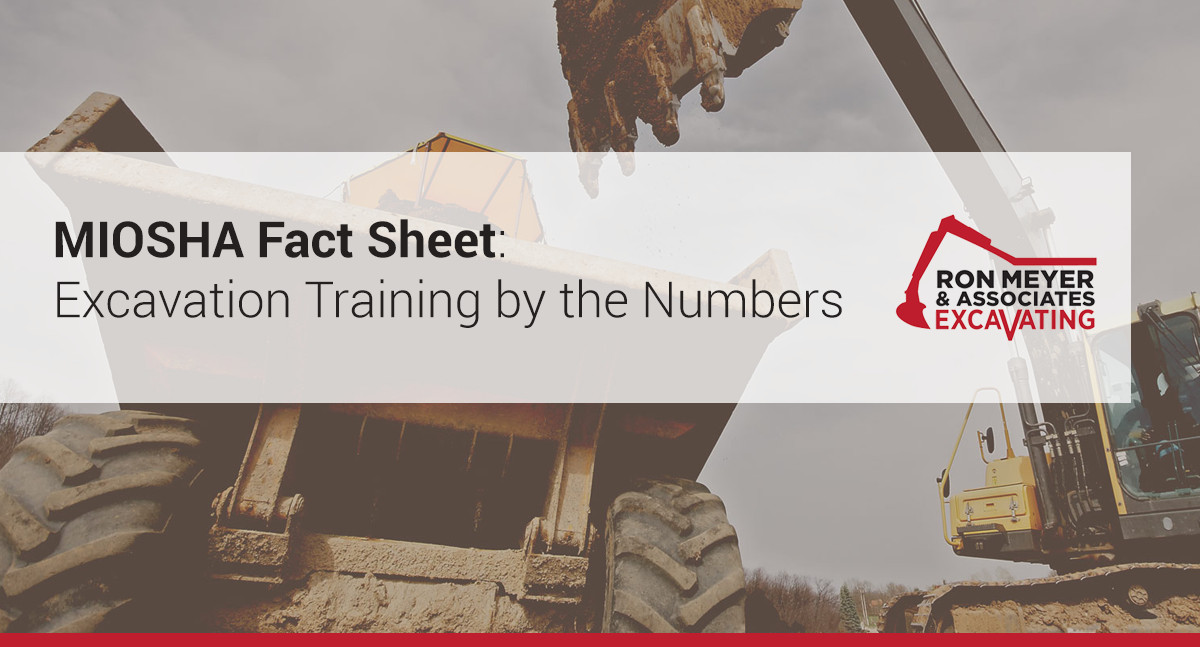
Considering that 20 percent of excavation, trenching, and shoring fatalities are estimated to occur in the employee’s first 90 days of employment, and that 40 percent are estimated to occur within the first year of employment–there appears to be a direct correlation between experience and safety.
In an effort to clarify the critical training elements, below is an introduction to excavation training in a format that is accessible and quickly digestible. Though not all-inclusive, the following list [courtesy of MIOSHA] includes some very useful numbers.
Zero employees allowed under loads.
One qualified person must perform an ongoing inspection of an excavation or trench (rule 932(5)).
Excavated material must be retained not less than two feet back from excavation’s edge (rule 933(2)).
Contact Miss Dig three days prior to excavating. Use only hand digging to locate utilities when in close proximity (rule 931(1)).
Ladders must extend not less than three feet above the top of the trench (rule 933(5)).
Ramps, runways, bridges, etc to be used by employees for trenches shall be capable of supporting not less than three times the imposed load (rule 951(6)).
An excavation more than four feet in depth and occupied by employees shall have either a ladder or a ramp (rule 933(5)).
One of four methods of employee protection can be used:
- Timber shoring;
- Hydraulic shoring, trench jacks, shields, or tiebacks;
- Trench boxes; or
- Sloping.
Trenches five feet in depth and over must be shored or sloped as shown in Table 1 (941(1)).
Trenches less than five feet in depth are subject to sloping and shoring if hazardous earth movement may be expected.
When benching a side of a trench, the height of the lower bench shall not be more than the lesser of five feet or width of the trench measured at the bottom (rule 944(3)).
Fall protection must be provided when employees are exposed to falls of six feet or more (Part 45 fall protection).
Construction Safety Standard, Part 9: Excavation, Trenching, and Shoring.
Ten feet in clearance shall be maintained from energized overhead electrical lines (including excavators, dump trucks, materials, personnel, and ladders).
Tie rods for tiebacks used to restrain top of sheeting shall be anchored a minimum of ten feet (rule 942(3)).
Trench boxes must extend eighteen inches above the top of the trench if the trench is to be sloped above the box (rule 945(1)).
A minimum of 19.5 percent oxygen must be present before employees enter a confined space (all other confined space regulations must also be followed per rule 934).
An open cut into a roadway shall be provided with a barricade on all sides as prescribed by rule 2223 of Part 22, Signals, Signs, and Barricades.
Trench boxes must be not more than twenty-four inches from the trench floor (rule 945(2)).
Ladders must be placed in trenches so that no employee is more than twenty-five feet from a ladder at any time (rule 933(5)).
The vertical height between the floor of the trench and the toe of a ramp used for trench access shall not exceed thirty inches (rule 933(6)(d)).
Barricades must be a minimum of thirty-six inches in height.
Guardrails must be forty-two inches plus or minus three inches at the top.
The degree of angle of a ramp used for trench access may not be more than 45 degrees (rule 933(6)(c)).
Hundreds are killed each year in excavations.
Thousands are injured each year in excavations.
Tens of thousands of dollars can be saved if employers and employees are aware of safety regulations and practice safety at their worksites.
At Ron Meyer & Associate Excavating, Inc, we’ve been providing underground and commercial construction to private and commercial businesses for 40+ years. As the general contractor or subcontractor, our experienced foremen, equipment operators, pipe layers, truck drivers and well-maintained equipment fleet make us an undeniable choice for your excavating services. Let’s talk about your project!
Sources:
- https://www.michigan.gov/documents/dleg/wsh_cet0183_304209_7.pdf

As 45 years of experience as an underground/site contactor and a third generation contractor, Ron takes time to go through each individual project with the supervisor and is responsible for all scheduling and equipment logistics. He’s also involved in all troubleshooting for projects.